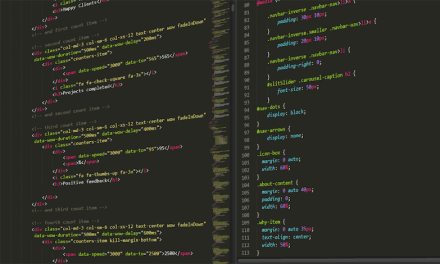Table of Contents
- Introduction
- Understanding the 17 Reference Profiles in The Predictive Index
- Exploring the Applications of The Predictive Index’s Reference Profiles
- How to Utilize The Predictive Index’s Reference Profiles for Effective Team Building
- The Benefits of Incorporating The Predictive Index’s Reference Profiles in Talent Management Strategies
- Q&A
- Conclusion
Unlocking the Power of Personality: A Comprehensive Overview of The Predictive Index’s 17 Reference Profiles
Introduction
A Comprehensive Overview of The Predictive Index’s 17 Reference Profiles provides a detailed analysis of the 17 reference profiles offered by The Predictive Index (PI). These reference profiles are designed to help individuals and organizations gain a better understanding of their behavioral drives and work preferences. By exploring each reference profile, individuals can identify their strengths, weaknesses, and potential areas for development. This comprehensive overview serves as a valuable resource for anyone interested in utilizing the PI system to enhance their personal and professional growth.
Understanding the 17 Reference Profiles in The Predictive Index

A Comprehensive Overview of The Predictive Index’s 17 Reference Profiles
Understanding the 17 Reference Profiles in The Predictive Index
The Predictive Index (PI) is a behavioral assessment tool that helps organizations understand the drives and motivations of their employees. It provides valuable insights into an individual’s natural behavioral tendencies, allowing organizations to make informed decisions about hiring, team building, and leadership development. One of the key components of the PI is the 17 Reference Profiles, which categorize individuals based on their behavioral patterns.
The 17 Reference Profiles are divided into four primary categories: Dominance, Extraversion, Patience, and Formality. Each category represents a different aspect of an individual’s behavior and provides a unique perspective on their strengths and weaknesses. Understanding these profiles can help organizations create more effective teams and improve overall performance.
The Dominance category consists of four profiles: Commanding, Persuasive, Controlling, and Assertive. Individuals with a Commanding profile are driven by results and have a strong desire to take charge. They are natural leaders who excel in high-pressure situations. Those with a Persuasive profile are skilled communicators who can influence others to achieve their goals. Controlling individuals are detail-oriented and prefer structure and order. Assertive individuals are confident and self-assured, making them effective decision-makers.
The Extraversion category includes five profiles: Social, Outgoing, Influencing, Animated, and Expressive. Social individuals thrive in social settings and enjoy collaborating with others. Outgoing individuals are energetic and enthusiastic, often taking on the role of the life of the party. Influencing individuals are persuasive and have a natural ability to motivate others. Animated individuals are expressive and enjoy being the center of attention. Expressive individuals are open and transparent, making them effective communicators.
The Patience category comprises four profiles: Accommodating, Cooperative, Steady, and Patient. Accommodating individuals are adaptable and flexible, often putting the needs of others before their own. Cooperative individuals are team players who value collaboration and harmony. Steady individuals are reliable and consistent, providing stability to their teams. Patient individuals are calm and composed, even in stressful situations.
The Formality category consists of four profiles: Precise, Conforming, Rule-Following, and Conscientious. Precise individuals pay attention to detail and strive for accuracy in their work. Conforming individuals prefer to follow established rules and procedures. Rule-Following individuals are diligent in adhering to guidelines and regulations. Conscientious individuals are thorough and meticulous, ensuring that tasks are completed to the highest standard.
Each of the 17 Reference Profiles provides valuable insights into an individual’s behavioral tendencies. By understanding these profiles, organizations can make more informed decisions about hiring, team building, and leadership development. For example, a team that requires strong leadership may benefit from individuals with a Commanding or Persuasive profile. On the other hand, a team that requires collaboration and harmony may benefit from individuals with a Cooperative or Accommodating profile.
It is important to note that individuals may exhibit traits from multiple profiles, as everyone is unique. The 17 Reference Profiles serve as a guide to understanding an individual’s natural behavioral tendencies, but they do not define a person entirely. It is essential to consider other factors such as skills, experience, and values when making decisions about individuals or teams.
In conclusion, the 17 Reference Profiles in The Predictive Index provide valuable insights into an individual’s behavioral tendencies. Understanding these profiles can help organizations create more effective teams and improve overall performance. By considering an individual’s Dominance, Extraversion, Patience, and Formality profiles, organizations can make more informed decisions about hiring, team building, and leadership development. However, it is important to remember that these profiles are just one piece of the puzzle and should be considered alongside other factors when making decisions.
Exploring the Applications of The Predictive Index’s Reference Profiles
A Comprehensive Overview of The Predictive Index’s 17 Reference Profiles
The Predictive Index (PI) is a powerful tool that helps organizations understand the behavioral drives and motivations of their employees. By using the PI, companies can gain valuable insights into their workforce, enabling them to make informed decisions about hiring, team building, and employee development. One of the key features of the PI is its 17 Reference Profiles, which provide a comprehensive overview of different behavioral patterns.
The Reference Profiles are based on four primary factors: dominance, extraversion, patience, and formality. These factors help to categorize individuals into different profiles, each with its own unique set of characteristics. By understanding these profiles, organizations can better understand how individuals are likely to behave in different situations and tailor their management and communication strategies accordingly.
One of the most common Reference Profiles is the Dominance profile. Individuals with this profile tend to be assertive, results-oriented, and direct in their communication style. They are often natural leaders who thrive in competitive environments and enjoy taking charge of projects. However, they may also be prone to impatience and can sometimes come across as overly aggressive or confrontational.
On the other end of the spectrum is the Submissiveness profile. Individuals with this profile are typically more reserved and prefer to work behind the scenes. They are often good listeners and are skilled at building relationships. However, they may struggle with assertiveness and may need encouragement to speak up and share their ideas.
The Extraversion profile is characterized by individuals who are outgoing, energetic, and sociable. They thrive in social settings and enjoy being the center of attention. They are often excellent communicators and can easily build rapport with others. However, they may also be prone to distraction and may need help staying focused on tasks.
In contrast, the Introversion profile is characterized by individuals who are more reserved and prefer to work independently. They are often deep thinkers and are skilled at analyzing complex problems. They may need time alone to recharge and may prefer written communication over face-to-face interactions.
The Patience profile is characterized by individuals who are calm, patient, and methodical in their approach. They are often excellent listeners and are skilled at resolving conflicts. They thrive in structured environments and prefer to work at a steady pace. However, they may struggle with making quick decisions and may need additional time to process information.
The Impatience profile, on the other hand, is characterized by individuals who are fast-paced, energetic, and action-oriented. They thrive in dynamic environments and enjoy taking risks. They may struggle with attention to detail and may need help staying organized.
Finally, the Formality profile is characterized by individuals who are detail-oriented, organized, and structured in their approach. They thrive in environments with clear rules and guidelines and are often excellent planners. However, they may struggle with adapting to change and may need additional support when faced with unexpected challenges.
Understanding these Reference Profiles can help organizations build more effective teams and improve communication within the workplace. By recognizing the strengths and weaknesses of each profile, managers can assign tasks and responsibilities that align with individuals’ natural tendencies. This can lead to increased productivity, higher job satisfaction, and improved overall performance.
In conclusion, The Predictive Index’s 17 Reference Profiles provide a comprehensive overview of different behavioral patterns. By understanding these profiles, organizations can gain valuable insights into their employees’ motivations and drives. This knowledge can be used to make informed decisions about hiring, team building, and employee development, ultimately leading to a more productive and harmonious workplace.
How to Utilize The Predictive Index’s Reference Profiles for Effective Team Building
A Comprehensive Overview of The Predictive Index’s 17 Reference Profiles
The Predictive Index is a powerful tool that can be used to assess and understand the behavioral drives and needs of individuals within a team. By utilizing the 17 Reference Profiles provided by The Predictive Index, team leaders and managers can gain valuable insights into their team members’ strengths, weaknesses, and preferred work styles. This information can then be used to effectively build and manage teams for optimal performance.
The 17 Reference Profiles offered by The Predictive Index are based on four primary factors: dominance, extraversion, patience, and formality. These factors help to categorize individuals into specific profiles that provide a comprehensive understanding of their behavioral tendencies. Each profile has its own unique set of characteristics and preferences, making it essential for team leaders to familiarize themselves with these profiles in order to effectively build and manage their teams.
One of the most common profiles is the Dominance profile. Individuals with this profile tend to be assertive, results-oriented, and focused on achieving goals. They thrive in fast-paced environments and are often natural leaders. However, they may also be prone to impatience and may need to work on their listening and collaboration skills.
On the other end of the spectrum is the Submissiveness profile. Individuals with this profile are more reserved and prefer to work behind the scenes. They are often detail-oriented and excel at tasks that require precision and accuracy. While they may not be as assertive as individuals with a Dominance profile, they are valuable team members who can provide stability and consistency.
The Extraversion profile is characterized by individuals who are outgoing, sociable, and energized by social interactions. They thrive in team settings and are often the life of the party. However, they may need to be mindful of their tendency to dominate conversations and ensure that they give others a chance to contribute.
In contrast, the Introversion profile is characterized by individuals who are more reserved and prefer to work independently. They are often deep thinkers and excel at tasks that require concentration and focus. While they may not be as comfortable in social settings as individuals with an Extraversion profile, they bring valuable insights and perspectives to the team.
The Patience profile is characterized by individuals who are calm, patient, and methodical in their approach to work. They excel at tasks that require attention to detail and a systematic approach. However, they may need to be mindful of their tendency to overanalyze and ensure that they don’t get stuck in the planning phase.
Lastly, the Formality profile is characterized by individuals who are organized, structured, and prefer to follow established rules and procedures. They excel at tasks that require adherence to guidelines and regulations. However, they may need to be mindful of their tendency to resist change and be open to new ideas and approaches.
By understanding the 17 Reference Profiles offered by The Predictive Index, team leaders can effectively build and manage teams that leverage the strengths of each individual. This can lead to increased productivity, improved collaboration, and ultimately, better results. It is important for team leaders to recognize that each profile brings unique strengths and weaknesses to the table, and by creating a diverse team that encompasses a range of profiles, they can ensure a well-rounded and high-performing team.
In conclusion, The Predictive Index’s 17 Reference Profiles provide a comprehensive overview of individuals’ behavioral tendencies and preferences. By utilizing these profiles, team leaders can effectively build and manage teams for optimal performance. It is essential for team leaders to familiarize themselves with each profile and recognize the unique strengths and weaknesses that each individual brings to the team. By leveraging these insights, team leaders can create a diverse and high-performing team that is capable of achieving outstanding results.
The Benefits of Incorporating The Predictive Index’s Reference Profiles in Talent Management Strategies
A Comprehensive Overview of The Predictive Index’s 17 Reference Profiles
The Benefits of Incorporating The Predictive Index’s Reference Profiles in Talent Management Strategies
In today’s competitive business landscape, organizations are constantly seeking ways to optimize their talent management strategies. One tool that has gained significant popularity in recent years is The Predictive Index’s reference profiles. These profiles provide valuable insights into an individual’s behavioral drives and motivations, helping organizations make informed decisions when it comes to hiring, promoting, and developing their employees.
The Predictive Index offers 17 reference profiles, each representing a unique combination of four behavioral drives: dominance, extraversion, patience, and formality. These drives are measured through a scientifically validated assessment, which individuals complete to determine their reference profile. By understanding an individual’s reference profile, organizations can gain a deeper understanding of their employees’ natural tendencies and preferences, enabling them to align roles and responsibilities more effectively.
One of the key benefits of incorporating The Predictive Index’s reference profiles in talent management strategies is the ability to make more accurate hiring decisions. By assessing candidates’ reference profiles during the recruitment process, organizations can identify individuals whose natural behavioral drives align with the requirements of the role. This ensures a better fit between the candidate and the job, increasing the likelihood of long-term success and reducing turnover.
Furthermore, reference profiles can also be used to identify high-potential employees within an organization. By analyzing the reference profiles of top performers, organizations can identify common behavioral patterns and use this information to identify individuals with similar profiles who may have the potential to excel in similar roles. This approach allows organizations to proactively develop and promote talent, ensuring a pipeline of capable leaders for the future.
In addition to hiring and development, reference profiles can also be used to enhance team dynamics. By understanding the reference profiles of team members, organizations can identify potential conflicts or areas of synergy within the team. For example, a team with predominantly dominant profiles may struggle with collaboration and may benefit from the inclusion of individuals with more patient or formal profiles. This insight allows organizations to build well-balanced teams that can effectively collaborate and achieve their goals.
Another advantage of incorporating reference profiles in talent management strategies is the ability to improve communication and reduce misunderstandings within the organization. By understanding an individual’s reference profile, managers can adapt their communication style to better resonate with their employees. For example, individuals with dominant profiles may prefer direct and concise communication, while individuals with more patient profiles may appreciate a more detailed and collaborative approach. By tailoring communication to individual preferences, organizations can foster stronger relationships and improve overall employee engagement.
In conclusion, The Predictive Index’s reference profiles offer a comprehensive and valuable tool for organizations looking to optimize their talent management strategies. By understanding an individual’s behavioral drives and motivations, organizations can make more accurate hiring decisions, identify high-potential employees, enhance team dynamics, and improve communication. Incorporating reference profiles into talent management strategies can lead to increased employee satisfaction, improved performance, and ultimately, greater organizational success.
Q&A
1. What is The Predictive Index’s 17 Reference Profiles?
The Predictive Index’s 17 Reference Profiles are a set of behavioral patterns that categorize individuals based on their workplace behaviors and motivations.
2. How are the 17 Reference Profiles used?
The 17 Reference Profiles are used to understand and predict how individuals will behave in the workplace, helping organizations make informed decisions about hiring, team building, and employee development.
3. What are some examples of the 17 Reference Profiles?
Some examples of the 17 Reference Profiles include Dominance, Extraversion, Patience, Formality, and Innovation. Each profile represents a unique combination of behavioral traits.
4. How can organizations benefit from using the 17 Reference Profiles?
By using the 17 Reference Profiles, organizations can improve their hiring process, create more effective teams, and enhance employee engagement and performance by aligning individuals with roles that suit their natural behavioral tendencies.
Conclusion
In conclusion, The Predictive Index’s 17 Reference Profiles provide a comprehensive overview of different personality types and behavioral tendencies. These profiles offer valuable insights into individuals’ strengths, weaknesses, and work preferences, allowing organizations to make informed decisions regarding talent management, team dynamics, and job fit. By understanding these reference profiles, businesses can optimize their hiring processes, improve employee engagement, and enhance overall organizational performance.




